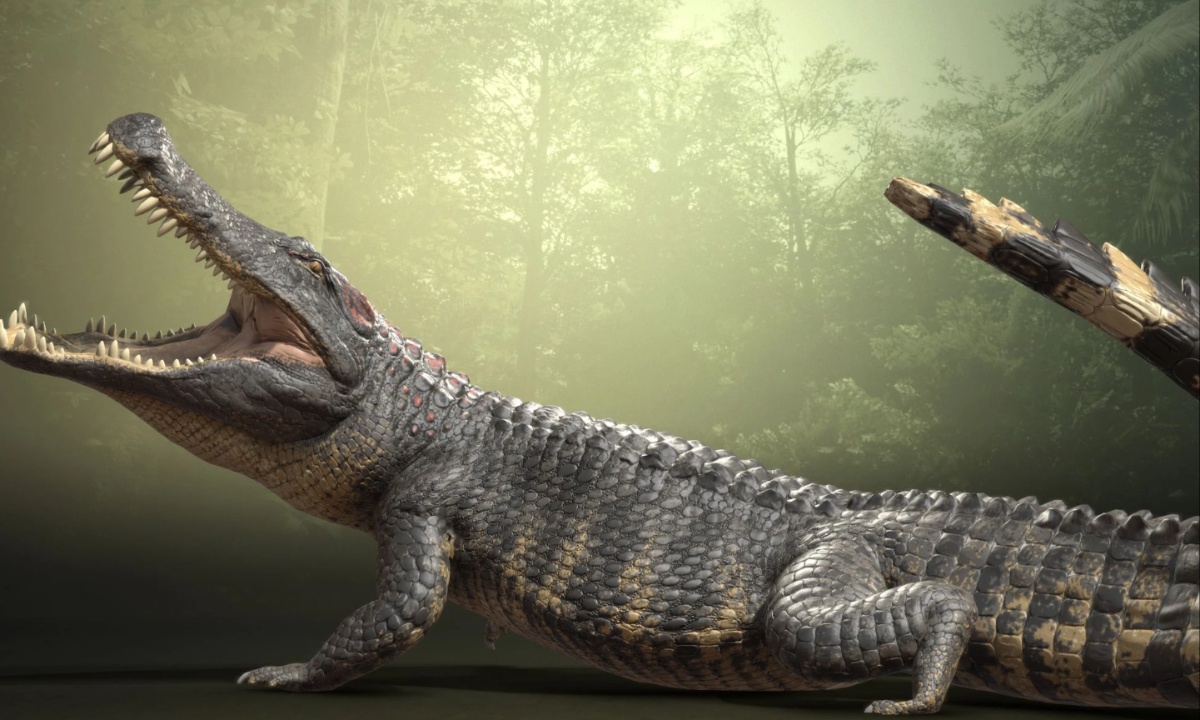Around 75 million years ago, North America’s largest and most formidable carnivore was not a dinosaur but a croc—Deinosuchus, meaning “terrible crocodile.” This massive predator could grow over 35 feet in length and weigh more than five tons.
Bite marks on fossilized bones confirm that Deinosuchus preyed on dinosaurs, establishing itself as a top predator in the coastal wetlands of Cretaceous North America. However, the mystery of how this reptile became so large and widespread has perplexed paleontologists until now. A new study offers new insights into its evolution and its role in prehistoric ecosystems.
New Study Redefines Deinosuchus’ Evolutionary Lineage and Its Adaptation to Varied Habitats
The study, published in Communications Biology, revises the understanding of Deinosuchus’ place in the croc family tree. For years, scientists believed it was closely related to modern alligators due to its alligator-like appearance, including a broad, rounded snout.
However, the new research suggests that Deinosuchus actually belonged to an ancient lineage that split off before the common ancestor of alligators and crocodiles. This unique position in the evolutionary tree enabled Deinosuchus to thrive in both freshwater and saltwater habitats, much like the saltwater crocodile today. This discovery shifts the perspective on how this ancient croc could dominate coastal regions across North America.

Deinosuchus fossils have been found in regions as far apart as New Jersey and Mexico, suggesting the reptile’s ability to adapt to a variety of environments. Traditional views held that alligators preferred freshwater, while crocodiles were more suited to saltwater.
The new study posits that Deinosuchus was more saltwater-tolerant than previously thought, potentially explaining its widespread distribution across North America’s coastlines. While some researchers, like Adam Cossette, remain skeptical about its saltwater tolerance, the new classification provides a plausible explanation for its presence in both coastal and freshwater ecosystems during the late Cretaceous period.
Deinosuchus’ Enormous Size and Apex Predator Status Fueled by Rich, Stable Wetland Ecosystems
Despite the ongoing debate about its exact environmental preferences, there is little doubt about Deinosuchus’ sheer size and predatory capabilities. This croc was a true apex predator, surpassing even the mighty tyrannosaurs in size. Deinosuchus’ bite force was stronger than that of T. rex, even though the two species did not coexist.
Its massive size can be attributed to the rich, high-productivity wetlands of Cretaceous North America, which provided abundant food sources and a stable environment. This ecological abundance allowed Deinosuchus to grow rapidly and sustain its enormous size, making it a formidable predator.
The success of Deinosuchus as a giant predator can be linked to the unique environmental conditions of its time. High global sea levels and a warm climate created optimal conditions for the rapid growth of marshes and swamps that supported a variety of prey species.
These conditions were critical for the evolution of giant reptiles like Deinosuchus. Similar growth patterns have been observed in other prehistoric crocs, such as Sarcosuchus in Africa and Purussaurus in South America. However, some scientists caution that the stability of the environment was just as important, as it allowed the species to thrive over long periods, fostering the evolution of such giants in Earth’s history.


